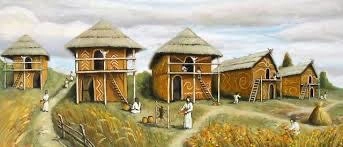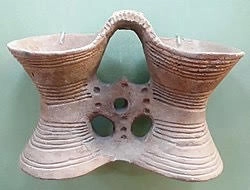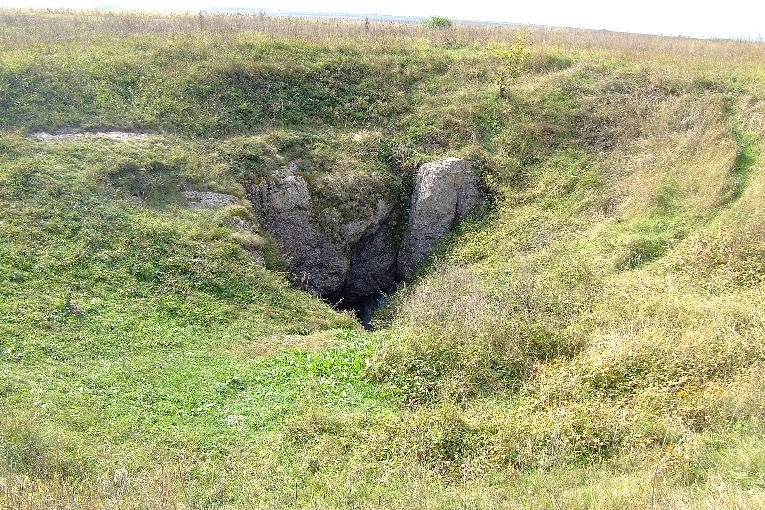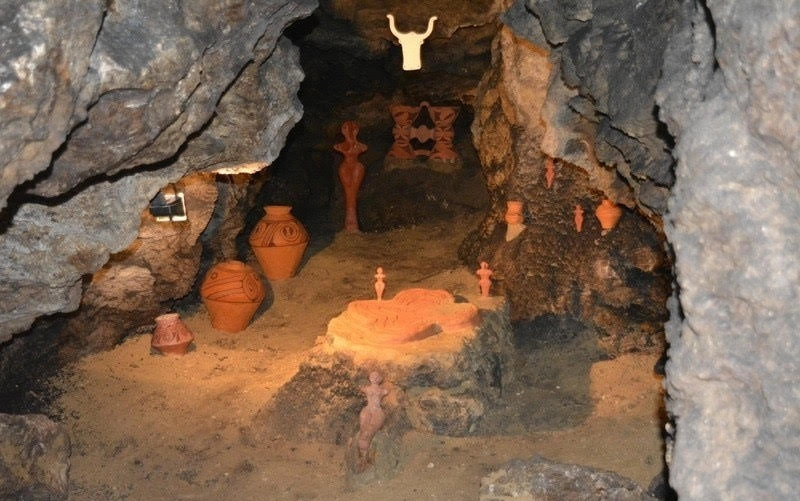As media attention turns to the impending 32nd anniversary of Ukraine's independence, taking place amid Russia's brutal, genocidal war against Ukrainians, it is timely to reflect on the primeval origins of this nation.
The Ukrainian land still harbors the secrets and mysteries of one of the most enigmatic human civilizations that emerged here 7,000 years ago and existed for almost three millennia.
JOIN US ON TELEGRAM
Follow our coverage of the war on the @Kyivpost_official.
This civilization was the first on planet Earth to smelt metal and build cities. When bread and metal were yet unknown on the European continent, the people of the time had already plowed and sown fields and cut trees with copper axes to build their houses and churches. When the first ancient states – Sumer, Egypt and Tiahuanaco – were only just rising, their towns had already lain in ruins for centuries. In North America and other parts of the world, people began to mold earthenware and cultivate plants when this civilization had long ceased to exist.
Scientists define it as a branch of an ancient European civilization that emerged after the Deluge. Traces of that Copper Age civilization were first found more than 200 years ago near the small town of Trypillia (which could be translated from Ukrainian as "Three Fields"), 40 km south of Kyiv. Hence the name "Trypillia Civilization."
The civilization flourished between 5,500 and 2,750 BC across a vast area of 350,000 km² stretching from the Carpathian Mountains to the Dnipro River. Most of the area is now Ukraine and the rest comprises Romania and Moldova. In various periods, by various estimates, its populace may have numbered 400,000 – 2 million.

New York’s Ukrainian Museum: Opening Out and Taking Back
Discovery
The first to discover traces of that ancient civilization was Vincenc Častoslav Chvojka, a Czech agronomist. In 1896, he bought a land plot in Trypillia, then a small village, to grow hop, but for some reason decided to make excavations and hired local peasants to help with the digging.
Vincenc Chvojka
The ornamented earthenware, copper tools, gold adornments, figurines and other objects that they unearthed from less than three feet deep made a global sensation. In later decades, archeologists found a multitude of objects proving that it was a highly developed ancient civilization.
Their houses, churches, human and animal figurines, earthenware, carts, sledges, chairs and thrones were all made of clay.
The old Trypillia masters were unsurpassed ceramists. They knew this material and its properties so well, and were able to vary its use so skillfully, that modern ceramists may have a lot to learn from them.
Ceramic artifacts of Trypillia culture
The Trypillians built their cities in concentric circles and the population of some of them exceeded 15,000 – a huge number even for the Middle Ages, let alone millennia ago. The largest of the known Trypillia proto-cities was discovered in the village of Talyanki, Cherkasy region, central Ukraine. It was four times larger than Babylon, covering an area of 450 hectares and had a population of 30,000.
Reconstruction of Talianki c. 4,000 B.C. Design: Kenny Arne Lang Antonsen & Jimmy John Antonsen
Daily life
The Trypillians lived in strange two-story houses where the ground floor was for household utensils and cattle and the upper one for people. They got heating from oxen and cows. The windows were round like ship illuminators and the front door threshold was high, akin to a spaceship. And they never locked their doors.
Trypillia women made flour using heavy stone grinders. It must have taken half an hour to make a pound of flour from rye grain, and this technique did not change for thousands of years.
They painted the walls of their homes (both outside and inside) along with their house utensils, farming tools, tableware and figurines. They developed their own unique manner of painting animals and people, framing their contours in ornaments.
Trypillia houses as they may have looked
Their life was filled with a sacred sense and various rituals where everything had its own special meaning. Clothes, houses, social activities and even ordinary utensils were sacral. For instance, their vessels were supposed to protect everything they contained – from water to ashes of the dead, who they burned rather than buried.
Signs and symbols
The signs and symbols painted on Trypillia jugs are more than just ritual painting. They were prototypes of icons – a kind of primeval impressionism – and possibly even germs of written language. These signs were one step from what later evolved into writing and are actually one of the very few sources of information about the Trypillia civilization that have survived these several millennia of history. That civilization left behind no pyramids, stone churches or steles – only painted earthenware.
The Trypillia ornaments carry symbols that appeared millennia later in other parts of the globe and became the determinant symbols in the great religions: the Yin-Yang, the Swastika and the Cross all stem from the Trypillia Culture. But the basic symbol was the universal, endless spiral.
The Trypillians made female figurines from clay mixed with rye flour. Venus could not compare to those slender bodies with slight signs of pregnancy. Maternity was their religion. Divych Hora (Virgin Hill) overlooking the Dnipro just outside Trypillia used to be the altar where they worshipped their Great Mother Goddess. Men were not allowed there.
And like all women in all epochs, the women of Trypillia liked adornments that were not just bright knickknacks and trinkets but amulets made of clay, shells, copper and gold. They wore straight close-cut dresses decorated with embroidered and woven ornaments. Their clothes did not only protect them from cold, but also from all evil spirits and witchcraft.
One of the numerous artifacts that archeologists found in excavations was a female figurine seated on a throne which was shaped like an ox’s head.
In that culture, the Ox personified the male entity and the Cow the female as the beginning of Nature, Life and everything (cows being sacred animals and symbols of fertility).
The Trypillians also bred pigs, sheep and poultry, and most scientists maintain they were the first on the planet to domesticate the horse.
Apart from comprehensible ceramic artifacts, there are other things, the purpose and meaning of which we can only guess. For example, one of them is the so-called “Trypillia Binocular” – a strange object resembling two jugs joined together.
Trypillia "binocular"
It is still unknown what the “binocular” was used for. Perhaps it was a drum, or a vessel, or a symbol of conjugal loyalty. Or it may have served for drawing rain. This form cannot be found in any other civilization, whereas in Trypillia such objects were innumerable.
The Trypillians were very skillful farmers, but they never improved their methods of extensive farming. Having exhausted their fields in six or seven decades, they burned down all their houses and moved to another place where they built new ones. Fire was sacred to them. They believed that everything and everyone – soil, houses, animals and people – had to undergo cleansing by fire. That is why they burned their home cities after each generation’s lifespan.
Mysterious cave
In 1828, peasants from the village of Bilche-Zolote in the Ternopil region, mid-western Ukraine, chanced upon a cave that later became a Mecca for archeologists and tourists from all over the world.
Polish prince Leon Ludwik Sapieha, the then owner of the village, gathered a large collection of thousands of Trypillia artifacts which he found in the cave and restored. He even had to use his large wine cellars to store them. Later, many of them found their way to museums in Krakow, Vienna and other European cities.
The locals call the cave Verteba which, in their dialect, means “gully” or “ravine.” Hidden in the shrubs, the entrance is rather difficult to find. Small wonder this place had remained unknown for thousands of years.
Entrance to Verteba
The Verteba cave is actually a number of huge underground halls supported by hundreds of pillars and linked by labyrinthine passages. Scientists are still debating what it was used for. Some maintain that it was a kind of sacral center, like Stonehenge in England.
Others believe it was the Trypillians’ hiding place in the last centuries of their existence. When bellicose northern tribes began to invade the fertile lands west of the Dnipro’s mid-flow, the Trypillians hid in the underground cave where the temperature never rises above +9° C. It makes many wonder how generations of those people could live there for several centuries.
Stream inside Verteba
The Verteba cave was not only a refuge for the Trypillians. During World War II, Jews hid there from the Nazis and, after the war, fighters of the Organization of Ukrainian Nationalists (OUN) and the Ukrainian Insurgent Army (UPA) hid there from the Soviets for nearly a decade.
There are thousands of artifacts in the cave that can be found at every step. Archeologists left some of them as they were, only cleaning the space around them.
Trypillia exhibits in the Verteba cave museum
The Verteba cave harbors many secrets. For instance, how did the inhabitants light it when they had no lamps? The clue may be numerous traces of fireplaces and smoky patches on the walls. Some archeologists presume that if the Trypillians made fires each 33 feet, they may just as well have done without any torches or lamps.
Incorrigible materialists, we wonder today why the Trypillians never cared about technical progress, but we forget what spiritual heights they attained.
Before their civilization ceased to exist, they learned to paint better and more exquisitely than few did before the Renaissance. Perhaps, they saw the sense of their life in its unchanged perpetuity, in attaining immortality. Their art, culture and lifestyles seemed not of this world. They were millennia ahead of their age, living perhaps in the future that Robert Heinlein, Isaac Asimov, George Orwell or other prophetic writers only dreamed of – a kind of future that today’s human world is striving for.
The Trypillians have not sunk into oblivion. They are still among us. Their genetic code is in our bodies and souls. All those who have lived on this land for the last five millennia, baking bread, smelting metal, building villages and towns and creating works of art, are the progeny of that great ancient civilization.
And unlike the uncivilized populace of Russia which is proving to be a colossus with feet of clay, the steel-hearted nation living on the Ukrainian land is destined to arise from the ashes of war and thrive – the way each generation of its progenitor, the Trypillia civilization, did several millennia ago.
You can also highlight the text and press Ctrl + Enter



















